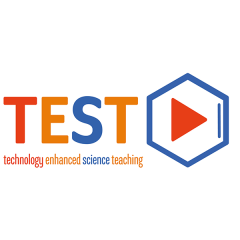
Science teaching combined with the use of multimedia tools enables a high level of learning outcomes.
This toolkit – the so-called ACAT Tools – offers learning – training – teaching material focusing on teaching science.
It is a set of approx. 15 individual multimedia-based and interactive software tools which are used by students either during lessons (as a kind of virtual lab) or at home to learn difficult/complex scientific content.
These tools or learning packages use the ACAT method, which enables students an easier understanding due to the Analogous Comparison and Transfer Method. Each tool focuses on a specific scientific background or phenomenon. Examples (from physics) are “What is dualism?”, “How do quantum objects behave?”, “Analogue and quantum behavior”.
Added-value of the project and the developed tools
- The tools are practically tested and evaluated examples of a new approach to strengthen the students’ understanding of complex science relations and therefore can be transferred
to new developed similar tools covering other science items - The ACAT method can be used as a teaching principle in other fields of education, for example in Adult Education
- The developed tools also teach digital competencies and experiences and use the e-Xcellence benchmark framework as well as the DigComp 2.0 framework, and therefore can be used as high-quality means for teaching also in other educational sectors.
Additional information: The ACAT method has been developed by Peter Mazohl, the head of the EBI, and presented at the International Conference for Education, Research, and Innovation in Seville in the year 2017. The paper is available from the Conference’s proceedings.
Source: P. Mazohl, H. Makl (2017) TEACHING SCIENCE SUBJECTS TO GIRLS – THE ANALOGOUS COMPARISON AND TRANSFER METHOD (ACAT), ICERI2017 Proceedings, pp. 1951-1958.
